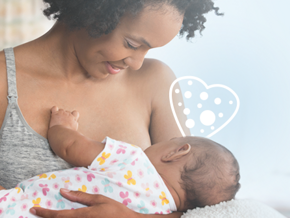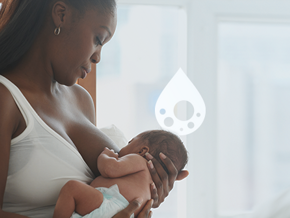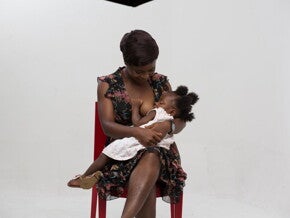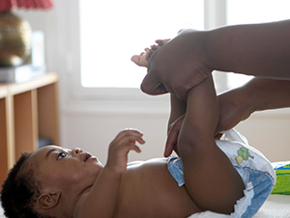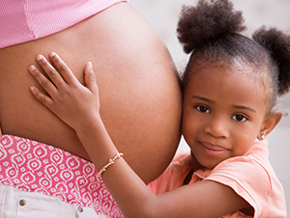
Introducing a bottle expressed breast milk
Bottle-feeding does not mean an end to breastfeeding. It may just be another means for your baby to continue to receive full nutrition in the form of expressed breastmilk. Here are some suggestions to help your baby adjust to bottle feedings while continuing to accept your breast:
1. Use bottle nipples that mimic the breast experience.
Some bottle nipple shapes and flow rates may create a similar flow and mouth positioning to that of a breast.
Consider using bottle nipples made of soft silicone with a wider base and a slow flow rate.
2. Breastfeed first.
Offer about half of a typical breastfeeding session first, then offer 1 to 2 oz. of expressed breastmilk or formula in the bottle. This will help your baby be more patient when adjusting to a bottle. If your baby is still hungry, return her to your breast to finish her feeding.
3. Replace one breastfeeding at a time.
If you need to replace more than one breastfeeding session, only replace one session for a bottle every 3 to 5 days. This will help prevent you from becoming engorged if you’re unable to express your breastmilk at those feeding times. Not expressing your milk during feeding times will risk a decreased milk supply.
4. Warm the bottle under warm running water.
Warming the expressed breastmilk will be helpful to mimic the temperature of your naturally warm milk when she breastfeeds. Don't heat a bottle to a temperature higher than body temperature. As always, never use a microwave to warm a bottle. Always test a warmed bottle before feeding your baby.
5. Pace the feeding.
Hold your baby in an upright and close feeding position. Hold the bottle more horizontally than straight up and down. Tilt the bottle just enough so the nipple fills with liquid, letting her get nourishment and not just air. Then, gently touch the nipple to her cheek, which may cause her instinctively to turn toward you with an opened mouth.
6. Let someone else try feeding her.
Some babies take a bottle more easily when someone other than Mom offers it. Whoever gives the bottle should snuggle with her to maintain the close contact she gets during breastfeeding.
7. Continue to hold the bottle for her.
Never prop the bottle with objects because it may interfere with her swallowing and decreases her important physical interaction time during feedings. Your baby should always be held during feedings.
8. Take a burp break.
Pause to burp her after every 30 to 45 ml, or if she pushes the bottle away or turns her head. If she continues to push the bottle away, she may be telling you she is full and to stop feeding. Frequent burping helps reduce the chance of spitting up and fussiness from stomach gas.
9. Burping positions
- Sitting up: sit her up on your lap and support her head and chest with one hand placed on her front. Lean her slightly forward; gently rub or pat her back.
- Over the shoulder: lean her up against you, with her chin resting on your shoulder; rub or gently pat her back.
- Across the lap: lay her across your lap with her chest supported on your lap, then gently rub or pat her back.
TOP TIP
Sit comfortably. Put her across your lap and tuck a pillow under your elbow, or rest it on the arm of the chair.
Switch sides. Even the littlest babies will start to feel heavy after a while.
Talk and touch. As she feeds, talk soothingly, touch her and maintain eye contact.
Be patient. If she resists the bottle, return her to your breast before either of you becomes frustrated, then try the bottle again at the next feeding. Eventually she should be able to feed from either breast or bottle without a problem

